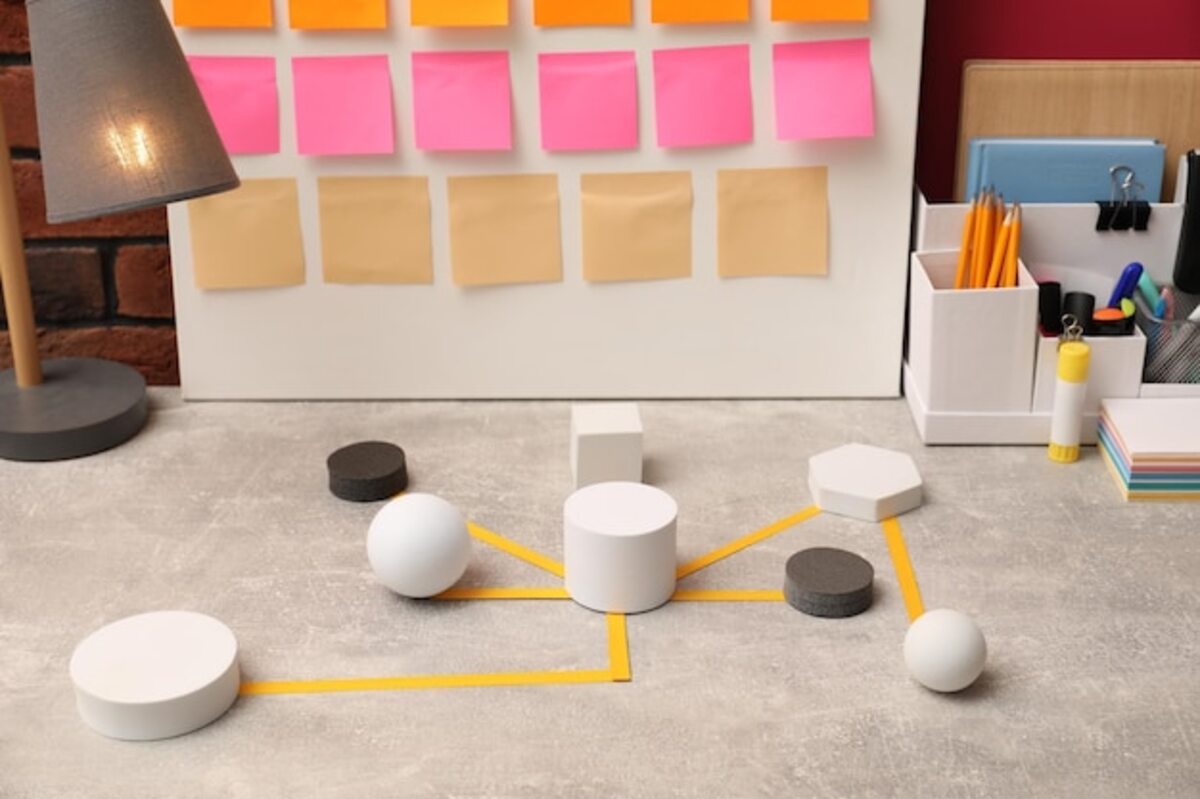Reinvent your home with adaptive organization solutions.

Reinvent your home with adaptive organization solutions that will transform your spaces into havens of harmony and functionality. In a world where clutter can become a silent enemy, it's essential to have smart strategies that optimize every corner of your house. From the closet to the kitchen, discover how to implement flexible systems that adjust to your daily needs and make your home a more welcoming and efficient place. It's time to take the first step towards a more organized life!
The importance of organization in home well-being
Home organization is not only about maintaining a clean and tidy space, but it also has a direct impact on our emotional and mental well-being. An unorganized environment can generate stress and anxiety, making it difficult for us to concentrate and enjoy daily life. By implementing adaptive organization solutions, we can transform our spaces into oases of calm where every object has its place. This not only facilitates daily tasks but also promotes a sense of accomplishment and satisfaction as we see how our home meets our needs. Moreover, the importance of organization goes beyond simple aesthetics; it is about creating a functional environment that fosters creativity and personal well-being. When our spaces are organized efficiently, we are more likely to find time for activities we truly enjoy, such as spending time with family or engaging in personal hobbies. By adopting flexible systems that adapt to our changing routines, we allow our home to evolve with us, becoming an ally rather than a source of frustration. Reinventing your home with these strategies can be the first step towards a fuller and more balanced life.
2. Adaptive solutions: What are they and how to apply them?
Adaptive solutions refer to methods and organizational systems that adjust to the changing needs of users and the dynamics of the home. Instead of adopting a rigid approach, these solutions allow for customization that considers daily use and the desired functionality. For example, using modular shelves instead of fixed furniture provides the necessary flexibility to rearrange spaces according to current preferences or activities. By implementing this type of organization, each area of the home can evolve without the need for major renovations, resulting in a more harmonious and practical environment. To apply adaptive solutions in your home, start by evaluating your spaces and how you use them. Identify areas that tend to be cluttered or non-functional and think about how they could benefit from flexible systems. You can incorporate stackable boxes in the closet, adjustable hooks in the kitchen, or even multifunctional furniture like extendable tables or sofa beds. The key is to choose versatile elements that allow for modifying the layout and storage as needed, thus maintaining an organized and welcoming home regardless of changes in your lifestyle.
3. Multifunctional spaces: Make the most of every square meter
Multifunctional spaces are an ideal solution for those looking to maximize every square meter of their home without sacrificing style or comfort. Nowadays, the concept of opening up and connecting areas has become essential, allowing different functions to coexist in the same place. For example, a living room can transform into an impromptu office during the day and a cozy entertainment space at night. The key is to choose versatile furniture, such as sofa beds or extendable tables, that adapt to various daily activities and offer flexibility to your routines.
In addition to furniture, smart storage plays a crucial role in creating multifunctional spaces. Use modular shelves that can be easily reconfigured based on what you need to store or display. Implement hidden solutions, such as benches with compartments or side tables with internal storage space, to help keep everything organized without sacrificing aesthetics. With these adaptive strategies, you will not only optimize your home to tackle clutter but also create more fluid and pleasant environments that promote a more harmonious and efficient daily life.
4. Tips for organizing your closet effortlessly
Organizing your closet may seem like an overwhelming task, but with some practical tips and a little planning, you can do it effortlessly. Start by completely emptying the space; this will allow you to see each garment or accessory you own. Next, sort your belongings into categories: everyday clothes, special items, and items you no longer wear. The last group can be donated or recycled, which not only frees up space but also contributes to a more sustainable lifestyle.
Once you have decluttered your wardrobe, consider investing in adaptive storage solutions like adjustable shelves, clear bins, and hooks. These tools not only maximize the available space but also make it easier to access your favorite garments. Organize by color or types of clothing to improve visibility and make your closet look neater. Remember that the key is to maintain the organization; establish a monthly habit to review and reorganize if necessary. With these simple steps, your closet will become a model of functionality and style.
5. Organized kitchens: Strategies to maximize storage
Kitchens are often one of the busiest spaces in the home, and keeping them organized can be a real challenge. To maximize storage, it's crucial to make the most of every available inch. An effective strategy is to use vertical organizers, such as open shelves or ledges on the walls, which not only provide additional space for utensils and spices but also add a decorative touch to the kitchen. Additionally, consider using labeled baskets or containers in the cabinets; this will help you categorize items and access them quickly when you need them.
Another valuable technique is the implementation of modular solutions, such as rolling carts or mobile islands that can be moved according to your daily needs. These versatile pieces of furniture allow for the creation of additional work and storage areas without the need for a complete remodel. Finally, do not underestimate the power of decluttering; conducting regular cleanouts and getting rid of what you do not use can free up valuable space and make it easier to maintain order. With these simple yet effective strategies, your kitchen can become a shining example of functionality and style within the home.
6. How to create designated areas in open spaces
Creating designated areas in open spaces is an excellent strategy to maximize functionality and order in your home. These specific areas allow each activity to have its own space, which not only facilitates access to the items you need but also helps prevent clutter. For example, by establishing a reading nook with a comfortable chair and a suitable lamp, you can transform an area of the living room into a haven of tranquility. Use shelves or room dividers to visually delineate the areas and give them their own identity without sacrificing the sense of spaciousness.
Also, consider incorporating multifunctional furniture that adapts to your needs. Extendable tables or benches with integrated storage can be ideal for creating flexible spaces that change according to the occasion. By organizing your furniture and accessories in this way, you foster an environment where each family member can enjoy their favorite activities without interference. The key is to maintain a harmonious aesthetic; select consistent color palettes and textures to ensure that the designated areas flow naturally into each other, creating an organized and welcoming home.
7. The role of modular furniture in home organization
Modular furniture has revolutionized the way we conceive home organization, offering versatile solutions that adapt to any space and lifestyle. Unlike traditional furniture, which can be rigid and limiting, modular systems allow for customization of the environment according to the changing needs of the inhabitants. From adjustable shelves to sectional sofas, this type of furniture facilitates the creation of functional and aesthetically pleasing areas, optimizing every corner of the house without sacrificing style. Moreover, the use of modular furniture encourages a more conscious mindset about consumption and sustainability. By choosing pieces that can be reconfigured or expanded over time, we not only reduce the need to acquire new furniture every time our circumstances change but also contribute to a more responsible lifestyle. The flexibility in modular design allows for experimentation with different arrangements and uses of space, transforming common areas into multifunctional havens where every element has its place and purpose. With these innovations, organizing your home becomes a creative and liberating process.
8. Creative ideas for organizing small and challenging areas
Organizing small and difficult areas may seem like an overwhelming challenge, but with a little creativity and some clever solutions, you can transform even the most complicated corners of your home. An excellent way to maximize space is to use vertical shelving that takes advantage of wall height. Opt for floating or modular shelves that fit your specific needs, allowing each item to have its place without taking up valuable floor space. Additionally, consider using decorative boxes or baskets to group small items; this will not only keep things tidy but also add an aesthetic touch to your decor.
Another effective approach to organizing small areas is to implement multifunctional furniture. For example, an ottoman with internal storage or a side table that folds away when not in use can be ideal solutions for small spaces. Similarly, wall hooks are perfect for hanging utensils in the kitchen or accessories in the hallway, thereby freeing up surfaces and creating a more open environment. Remember that adaptive solutions not only optimize space; they also promote a calmer and more harmonious atmosphere in your home. With these creative ideas, every corner can become a functional and stylish area, contributing to a more organized and satisfying life.
9. Essential tools for maintaining daily organization
Daily organization is key to maintaining a harmonious and functional home, and having the right tools can make a difference. Among the essential elements are versatile storage boxes that allow for sorting and storing items in different spaces, from toys to kitchen utensils. The incorporation of hooks or floating shelves also provides an elegant solution to maximize the use of vertical space, thus freeing surfaces that tend to accumulate clutter. Additionally, drawer organizers are essential for keeping everything in its place, facilitating access to what you really need without wasting time searching through the chaos.
Don't forget the importance of a visual calendar or a whiteboard in your home; these elements not only help plan daily tasks and important reminders but also promote family communication and collaboration in managing the household. Complement these tools with decorative baskets that can serve both as storage and decorative elements, seamlessly integrating into your home's style. With these essential tools at your disposal, you can establish more effective routines and enjoy a more organized and pleasant environment every day.
10. Gradual transformation: Steps for effective reorganization
Gradual transformation is key to achieving effective reorganization in your home. Start by identifying the areas that require urgent attention and establish a short, medium, and long-term plan. Instead of tackling the entire space at once, break the work into manageable tasks that you can complete in short sessions. For example, dedicate one weekend to organizing just the kitchen and leave the closet for the next week. This approach not only reduces the overwhelming feeling of having to do everything at the same time but also allows you to see significant progress that motivates you to continue with the process.
Once you have established a schedule, it is essential to select the right tools to facilitate organization. Use adaptive storage systems, such as stackable boxes or modular shelves, that fit your specific needs and easily adapt to different spaces. Additionally, consider incorporating decorative elements that also serve functional purposes; for example, attractive baskets or containers can help you maintain order without sacrificing the aesthetic of your home. Remember that this transformation does not have to be perfect from the start; the important thing is to take small steps towards a more organized life and enjoy the process while creating a more harmonious and welcoming environment.



